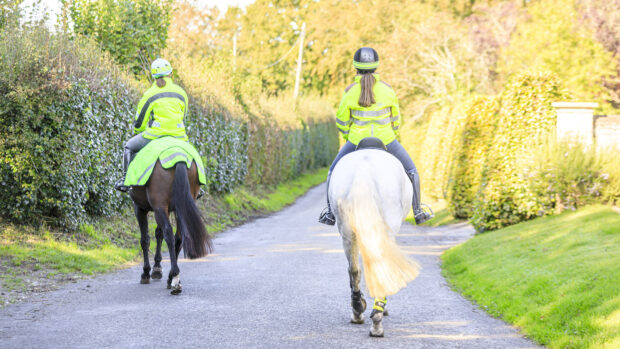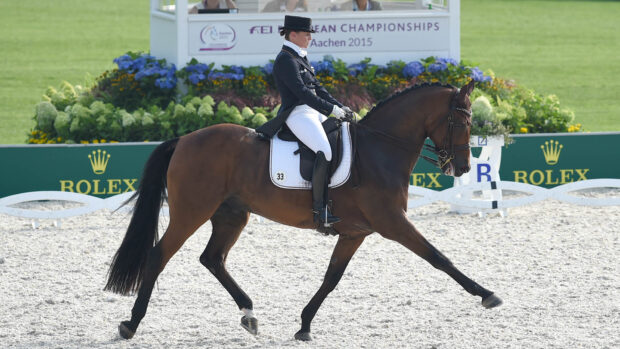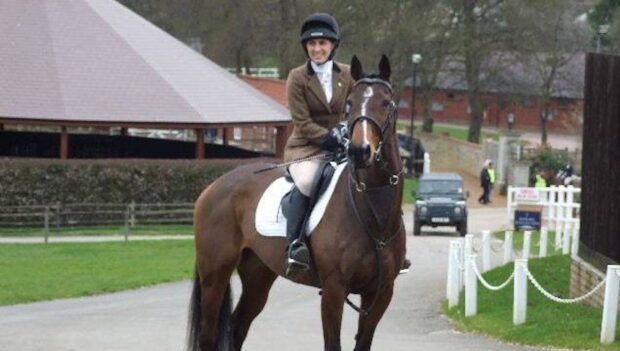The four-time Olympic medallist on being superstitious at competitions, learning respect for his horses and the importance of feeding according to work
I’m incredibly superstitious. At a competition, I always used to put my left boot and right spur on first and I do it most days at home, too. Don’t ask me why – it’s just a ritual.
At Badminton and Burghley, I used to get very nervous and I miss that “Saturday morning stomach” on cross-country day. I always had a cooked breakfast, though, because if I was riding two horses, I didn’t know when my next meal would be. Once I was on the horse, I was 100% focused on the course and riding.
I watched a lot of showjumping growing up and remember seeing Harvey Smith and David Broome. Although they are not much older than me, I took note of Lucinda Green, Richard Meade and Mark Phillips once I was eventing.
I never knew my father and was brought up by my mother, who bought all my riding kit secondhand, saying it was a phase that I’d grow out of one day.
That made me hungry to be better and I appreciated everything because nothing was handed to me on a plate. I had to work for it all and it kept my feet on the ground.
Emotional rides
In the early stages of my career, youth, ambition and a bit of arrogance – although I like to pretend I wasn’t arrogant – made me ride fast at every competition. I was hungry to win so I overused the horses’ speed.
As I grew older, I developed more empathy and learnt to be more economical with the horses and save the wear and tear on them. As a younger rider, you also expect the horses to do it for you and take that for granted.
When I was in my 40s and 50s, I would be so emotional at the end of a Badminton or Burghley ride because I had so much admiration and respect for the horses.
After I rode Stanwick Ghost round Badminton, I had to walk away from Clare Balding, who wanted to interview me, because I thought I was going to burst into tears – I was so emotional about what the horse had given me.
Feed appropriately
I’m always looking for horses to be in front of the leg and polite in the contact. I dislike horses being strong, so first and foremost they have to be soft in the hand.
At the stables where I learnt to ride, the horses were fed like fighting cockerels. They looked amazing, but we’d go there to ride on Saturday morning and it was like a rodeo act – they’d buck and buck, and I’d get fired off.
An old worthy told me you shouldn’t feed horses past the point where you can control them; horses should be fed according to their work and should be rideable.
You have to let your eye and the feel you get dictate their feed and that goes for all equines from ponies to event horses.
One horse who was always on edge was Glenburnie. I was already fairly experienced when I rode him and he was European champion in 1991 at Punchestown, but I felt he should have won more because he was so talented. If I’d had more knowledge and experience, I could have helped him more rather than learning along with him.
About Ian Stark
During his eventing career, Ian Stark won Badminton three times and collected 18 senior championship medals, including individual medals at the Olympics and World Championships, plus individual gold at the 1991 European Championships. He recently retired from the role of a leading cross-country course-designer.
- To stay up to date with all the breaking news throughout London International and more, subscribe to the Horse & Hound website
You may also be interested in:

Ian Stark ‘thrilled’ to design his first five-star cross-country course
‘This is a big step up moving to the five-star and I’m thrilled to be able to design there’

Happy Birthday Ian Stark! 11 reasons to be in awe of Scotland’s eventing legend
The former four-star eventer and course designer turns 61 today (22 February), which is the perfect excuse to remind ourselves

Olympic eventing legend stars in Waterloo re-enactment
Ian Stark will take on the role of the Duke of Wellington in a re-enactment of the Battle of Waterloo

Subscribe to Horse & Hound magazine today – and enjoy unlimited website access all year round




